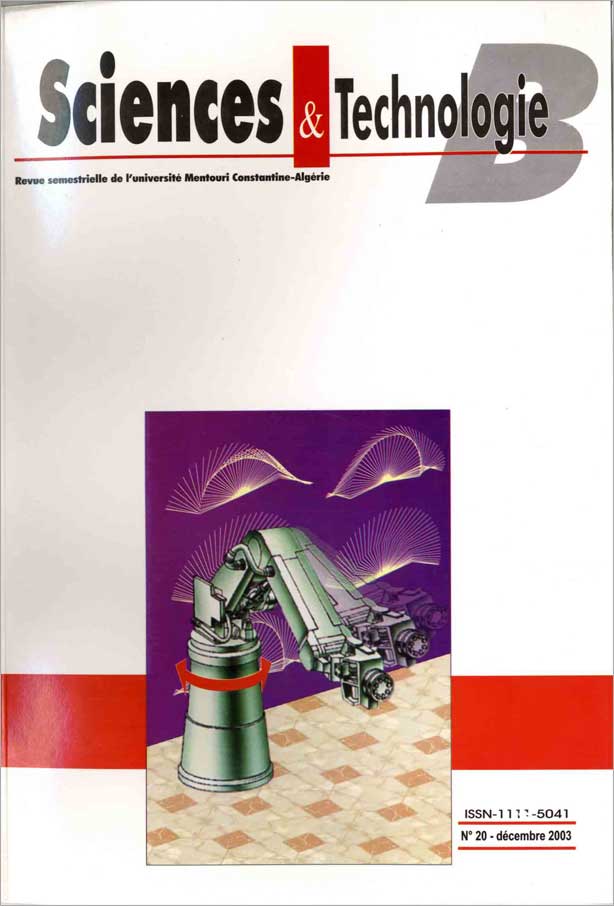EDGE MACHINABILITY OF MDF EFFECT ON SURFACE QUALITY AND CONSEQUENCE FOR GLUING
Mots-clés :
Machinability, M.D.F., Surface quality, GluingRésumé
MDF is becoming the basic wood-based material used in the furniture industry. The main goal of the research is the improvement of the machining process to produce edge surfaces with the required quality for a high gluing toughnessThe fracture energy ratio (G1c) is measured using cantilever beams samples and the results are analyzed to qualify the toughness of two planed MDF panel edges glued together.
The chip thickness effect on G1c is clearly demonstrated by the experiments. Here, it is possible to find a linear relationship between G1c and surface roughness criterion (Ra). The allowed chip thickness is limited by the industrial milling conditionsWe can conclude that the chip thickness in the range 0.20 up to 0.35 is the most significant parameter for a high performance gluingRéférences
- Zerizer A., "Contribution â l'étude de l'usinabilité du MDF", Thèse de l'Université de Nancy I, (1991), 177p.
- Triboulot P., Leban J.M., Kremer P., Martin P., "Planning of Norway Spruce with very varied ring width", Holz als Roh and Vorkstaff, 49. (1991) , pp. 181 184.
- Koutsky J.A., "Recent results on Fracture Toughness of Bonded wood", Proceeding of Symposium wood adhesives research application, FPL USDA Forest source, (1980).
- Takatami H. and Sasaki H., "Effect of glue line flexibility on cleavage fracture toughness of wood", Wood Research, 66, (1980), pp. 30 51.
- Ebewelle R., B.H. River, Koutsy J., "Tapered double cantilever beam fracture tests of phenolic-wood", Adhesive joint, Part 2, Wood and Fiber 12(1), (1980), pp.40 65.
- Duchanois G., "Mesure de la ténacité et étude du comportement mécanique des joints bois colle", Thèse de Docteur Ingénieur INPL, (1984).
- Boehme C., "Usure des arêtes tranchantes des outils d'usinage et qualité des chants lors de l’usinage des panneaux de particules", Holz Zentralblatt, N°82 (1987), pp. 1173 1175.
- Normes françaises NF E85 16 - NF E05 17 Spécification et détermination des surfaces (1972).
- Rozumek O. "Etude de la mouillabilité d'un matériau cellulosique : le bois. Relation mouillabilité adhésion", Thèse de Doctorat, Université de Haute Alsace, (1986).
- Ebewelle R., Koutsy A., "Tapered double cantilever beam fracture test of phenolic-wood adhesive joints Part 1", Wood and Fiber, 11(3), (1979), pp. 197 213.
Téléchargements
Publié
Numéro
Rubrique
Licence
Les auteurs publiant dans cette revue acceptent les termes suivants :- Les auteurs détiennent le droit d'auteurs et accordent à la revue
le droit de première publication, avec l’ouvrage disponible simultanément [SPÉCIFIER LA PÉRIODE DE TEMPS] après publication, sous la licence Licence d’attribution Creative Commons qui permet à d'autres de partager l'ouvrage en en reconnaissant la paternité et la publication initiale dans cette revue. - Les auteurs peuvent conclure des ententes contractuelles additionnelles et séparées pour la diffusion non exclusive de la version imprimée de l'ouvrage par la revue (par ex., le dépôt institutionnel ou la publication dans un livre), accompagné d'une mention reconnaissant sa publication initiale dans cette revue.
- Les auteurs ont le droit et sont encouragés à publier leur ouvrage en ligne (par ex., dans un dépôt institutionnel ou sur le site Web d'une institution) avant et pendant le processus de soumission, car cela peut mener à des échanges fructueux ainsi qu'à un nombre plus important, plus rapidement, de références à l’ouvrage publié (Consulter The Effect of Open Access).

